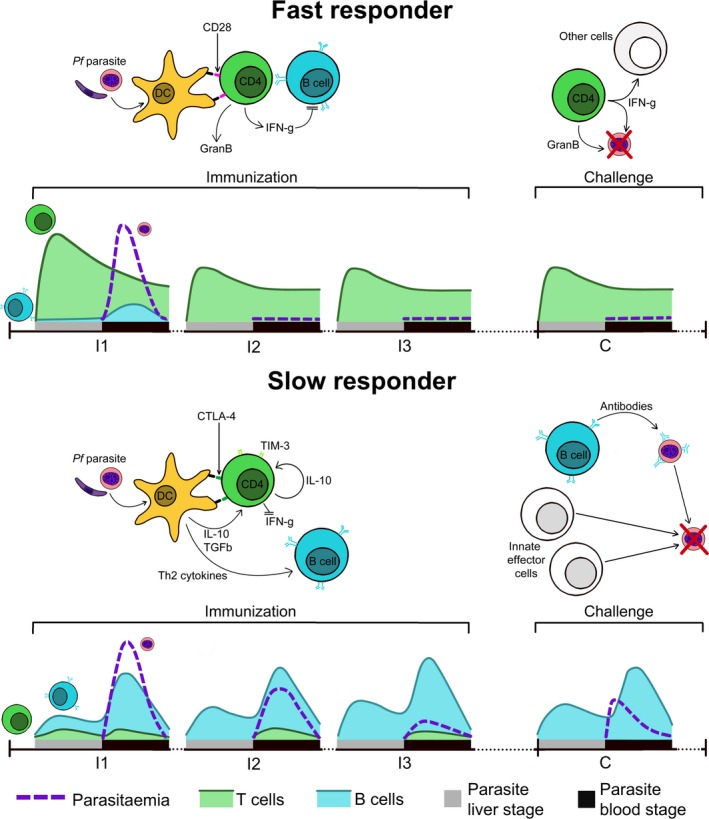Figure 5.

Fast and slow responders. Chemoprophylaxis with sporozoite immunization volunteers are exposed to three immunizations (I1‐I3) at monthly intervals followed by a challenge period (C) 2‐3 mo later. Based on the speed at which they acquire sterile protection, volunteers can be divided into fast and slow responders. Fast responders rapidly initiate cytotoxic and IFN‐γ+ T cell responses to malaria, but humoral responses are minimal, possibly due to inhibition by IFN‐γ+. Fast responders are successfully able to control parasitemia after the first immunization and are protected during final challenge by this stably maintained population of cytotoxic T cells. Slow responders do not initiate T cell responses to parasitemia as their T cells express high levels of inhibitory ligands CTLA‐4 and TIM‐3, leading to suppression of IFN‐γ in part due to Treg polarization. Instead, they produce humoral responses in response to the high burden of blood‐stage parasites. These antibodies are able to reduce parasitemia in subsequent immunizations but not control it entirely. Increased parasite exposure boosts antibody titers. During challenge, parasitemia is controlled through a mixture of humoral and innate responses, though this is less effective than IFN‐γ+ T cell immunity
